Tomb 34
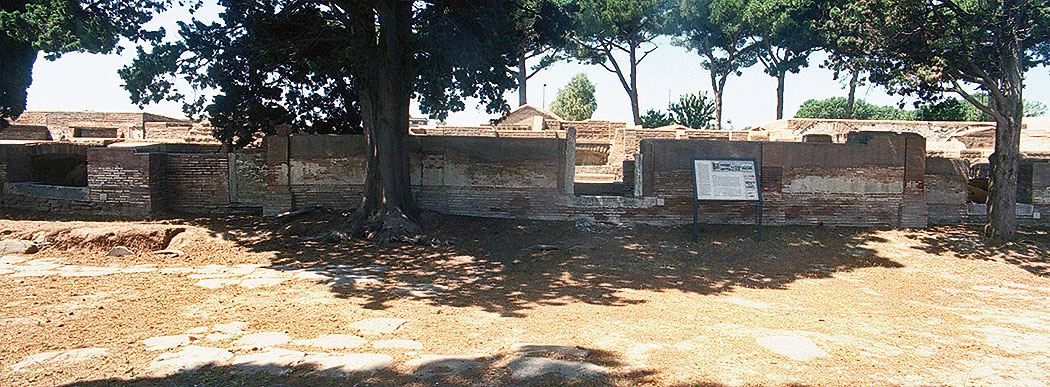
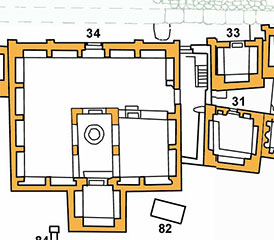 This grave belongs to a row of tombs from a relatively young period. Tomb 34 has been built above tombs from an earlier time.
This grave belongs to a row of tombs from a relatively young period. Tomb 34 has been built above tombs from an earlier time.
On the right side the grave borders on tombs 35 and 36. On the left side we see the space with the uncertain function which closes the former passageway between tombs 33 and 34.
Originally tomb 34 was detached and surrounded by a large unroofed enclosure with a burial chamber like an apse in the back wall.
Of the entrance only the threshold and the door jambs with holes for the bolts and hinges survive.
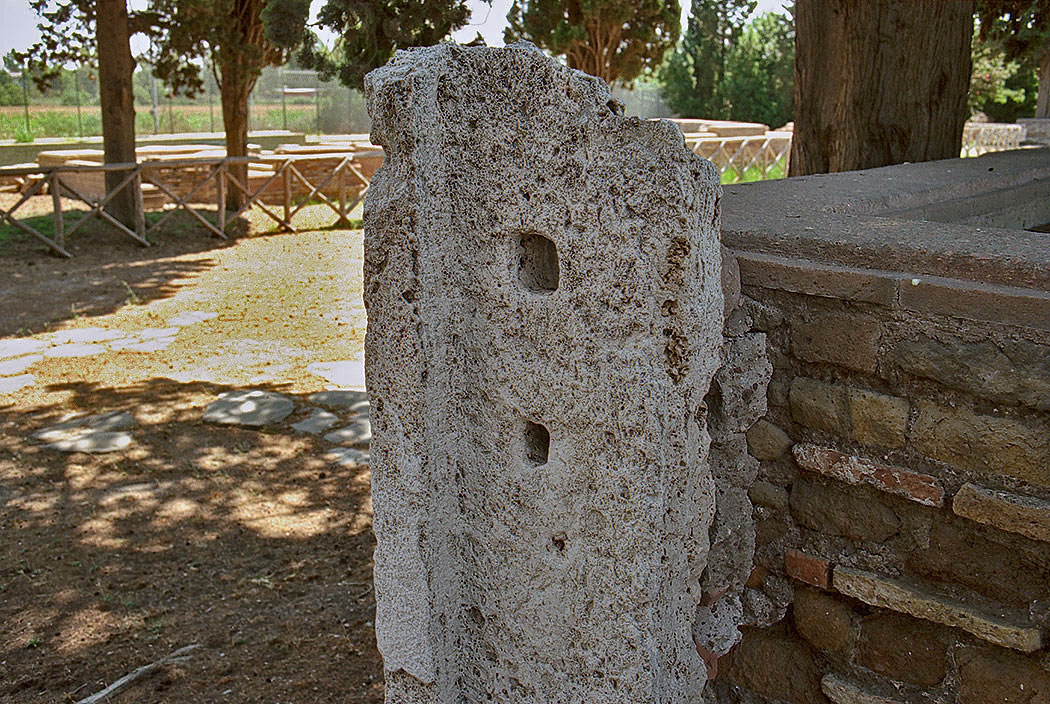
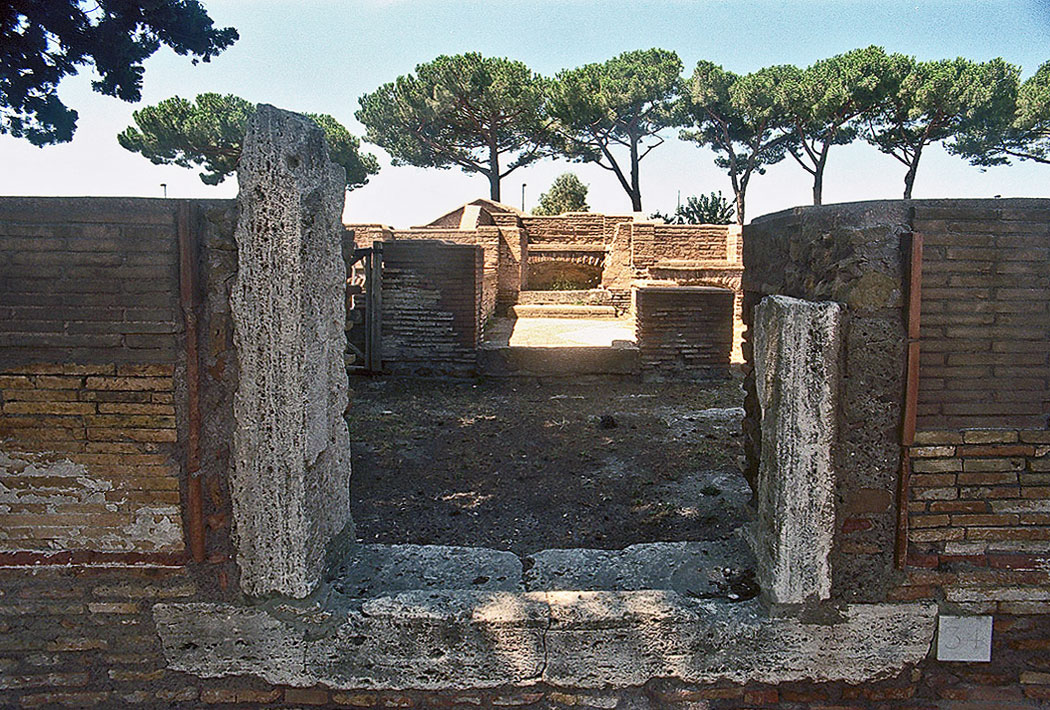
and of the burial chamber.
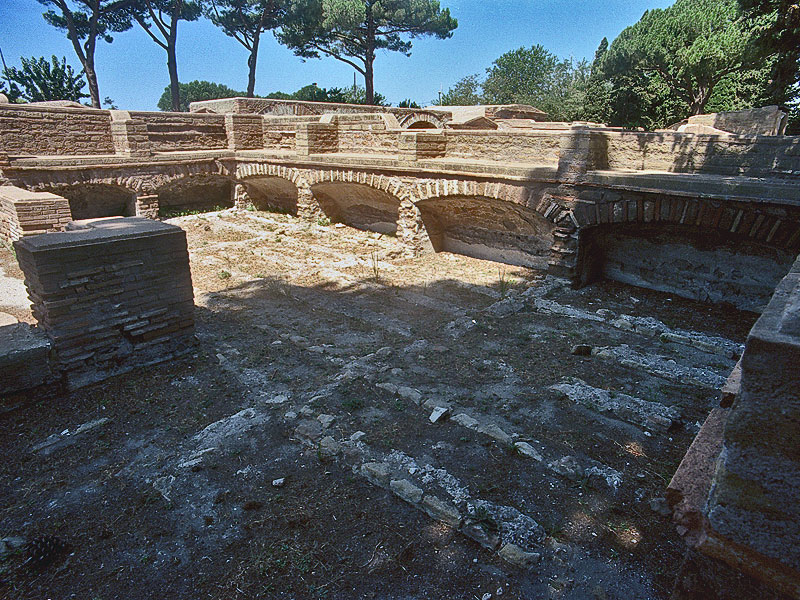
The whole courtyard was arranged for inhumation. In the walls are double rows of arcosolia. Beneath the floor unused space was hard to find. Even below the floor of the room to the left of the burial chamber no free place was left before a re-arrangement.
The entrance of the burial chamber lies in one line with the entrance of the enclosure.
In front of the burial chamber is a round well surrounded by a black-and-white mosaic. The well itself was kept free and had a decorated border. The rectangular main part of the mosaic shows in the angles bushes, flowers and birds. In the central medallion we see a bearded head from the time of Hadrian, allegorically representing a river or ocean.1 The mosaic with the well was covered by a small colonnade of four tiny columns.
During a later period this colonnade was closed by walls between the columns. The front side was kept open and a threshold was placed on the floor to give the impression that this was the entrance to the burial chamber.
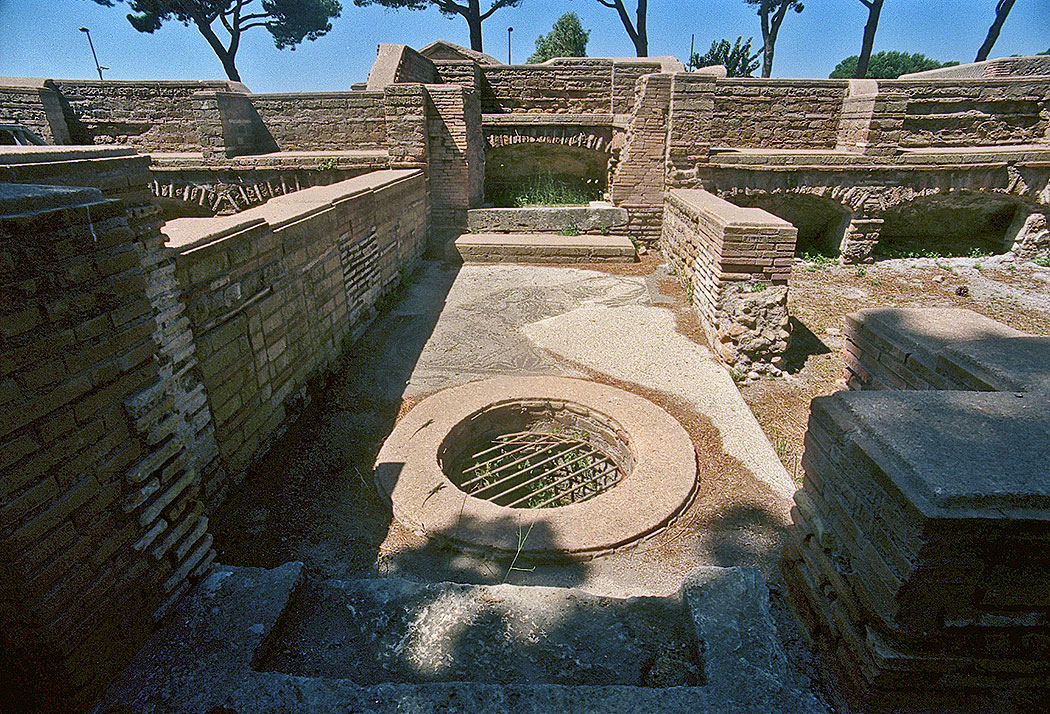

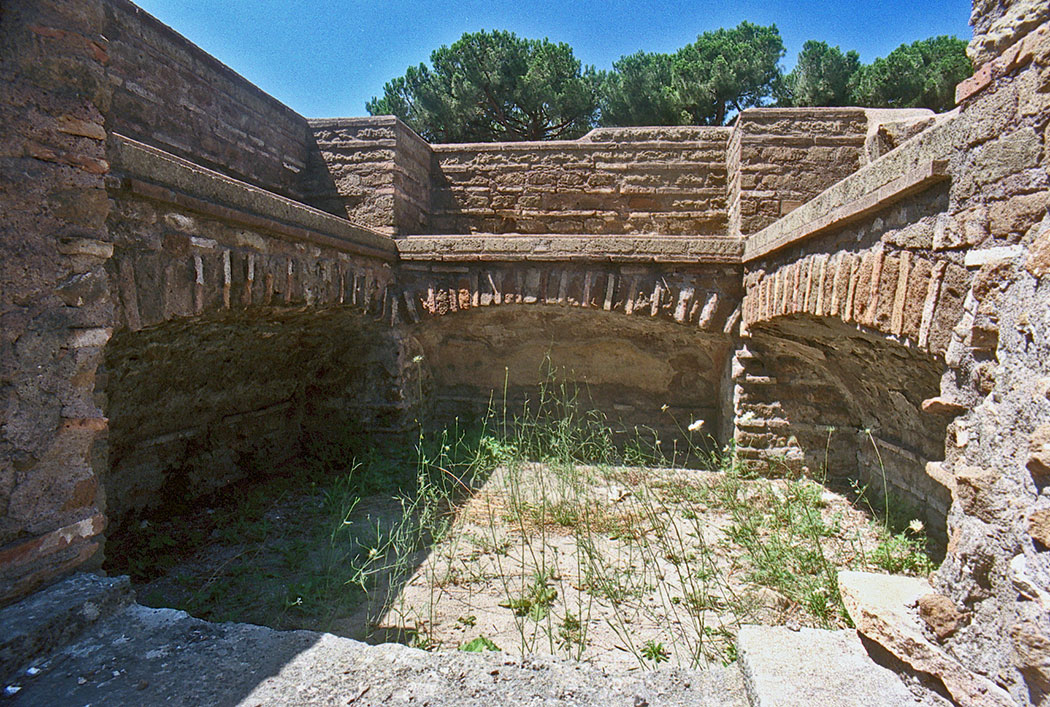

The burial chamber was built for inhumation only. Although the upper parts of the walls have disappeared, we know for sure that there were two rows of arcosolia.
Beneath the floor were also burial places. The total room for bodies under the floor of tomb 34 comes to 120.
Adding the places in the arcosolia, we can speak of a burial house with an immense capacity.
Because of the absence of any kind of inscription we don't know with what kind of tomb we are dealing. One could think of a tomb of a so called collegium funeraticium, a funerary guild. We know these existed, but no evidence or clue about these collegia has been found so far in the necropolis of Isola Sacra. Excavations below tomb 34 have brought to light the existence of tombs "a cassone" from the earliest period of the necropolis, including an inscription about a Flavian freedman.
The left side of the enclosure was totally changed during a second expansion. The room between the already closed colonnade and the southern wall of the enclosure was closed by a wall with a door. In this way a new chamber was created. Later a new burial chamber was created below this room, as we shall see.
The floor of the upper burial chamber has unfortunately disappeared.
In the other part of the southern wall a door was made to the closed passageway with the staircase (see tomb 33).
During the excavations many fragments of sarcophagi have been found, because a lot of arcosolia were closed with slabs from sarcophagi. Some of the niches in the lower row still had their decorations. Three of them are now stored in the Ostian museum (inv. nrs. 10123, 10802, 10803). The paintings are much similar to the ones in the "Insula delle Volte Dipinte" in Ostia. The themes are birds facing each other; birds in a landscape; landscapes with cattle; marshes; hunting-scenes with deer; fishing cupids. Almost every kind of funerary decoration from the end of the second and beginning of the third century is here represented. Although the perspective and the proportion of the limbs are rather simplistic, the paintings radiate a bright vivacity.
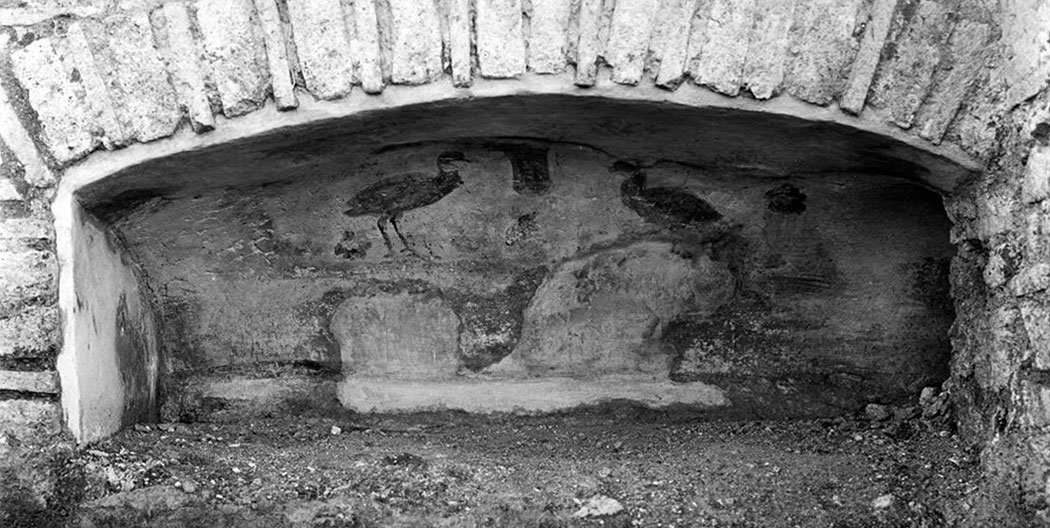
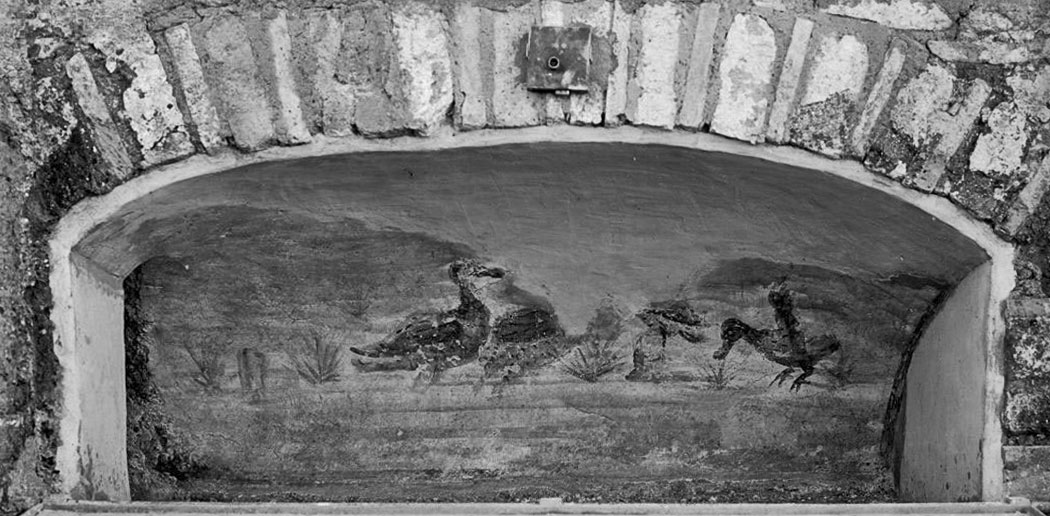
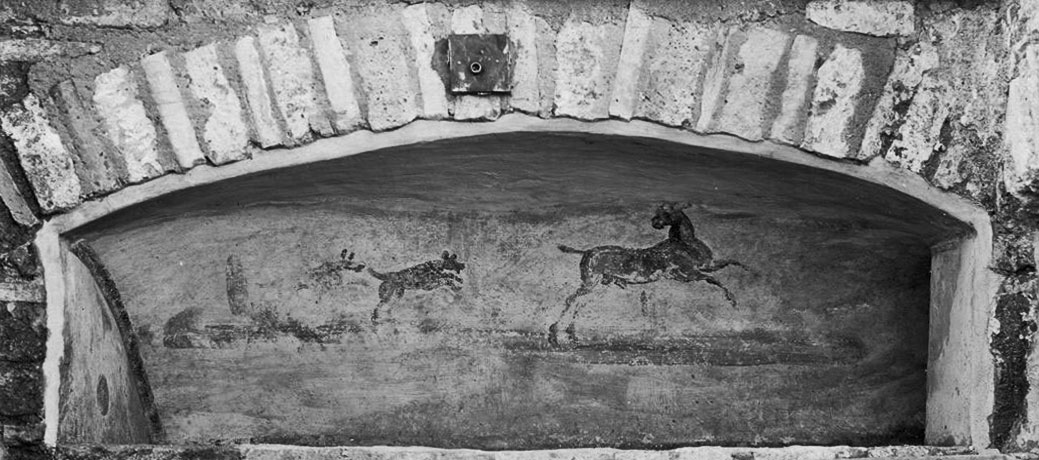
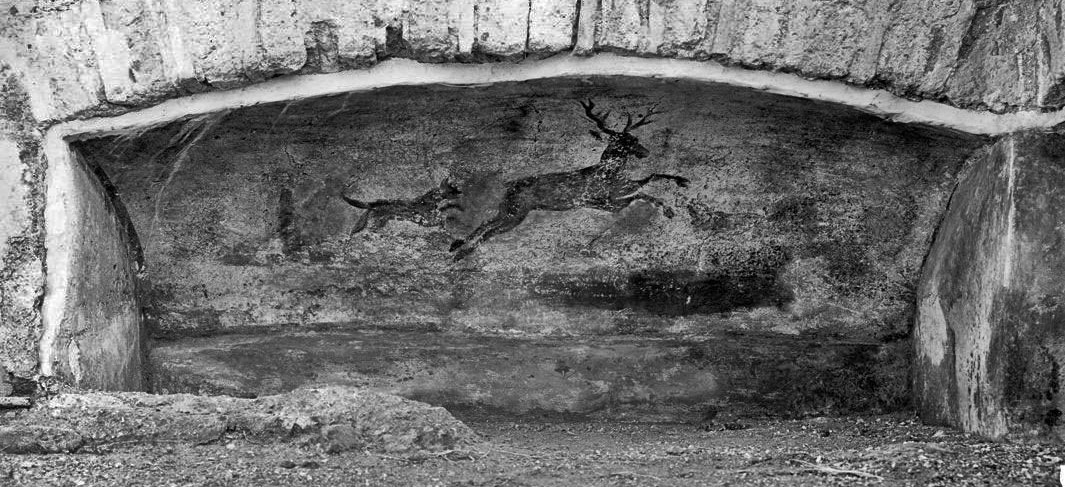
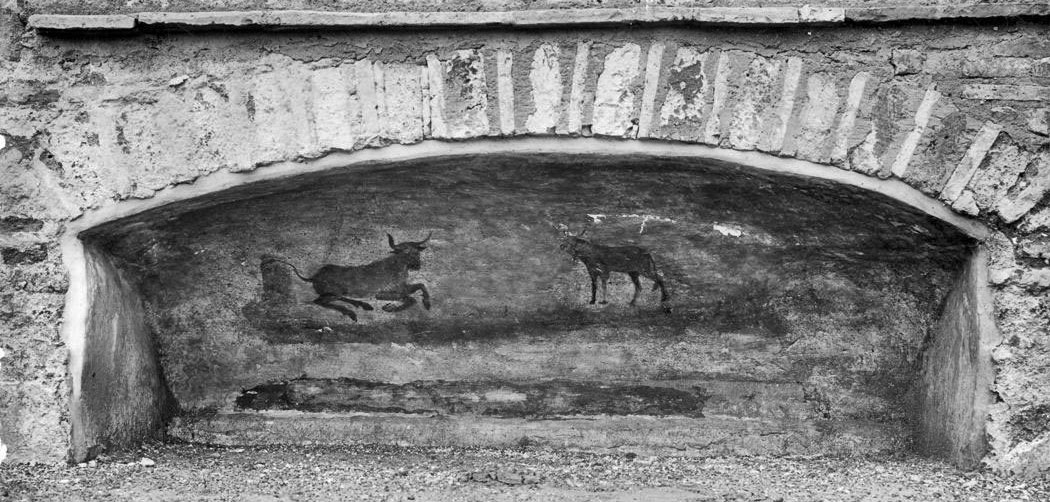
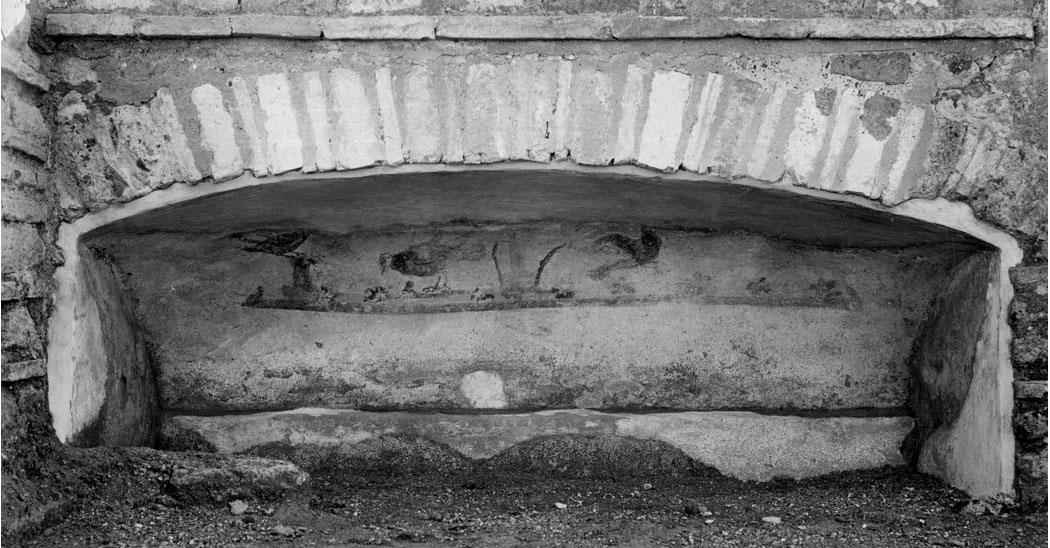
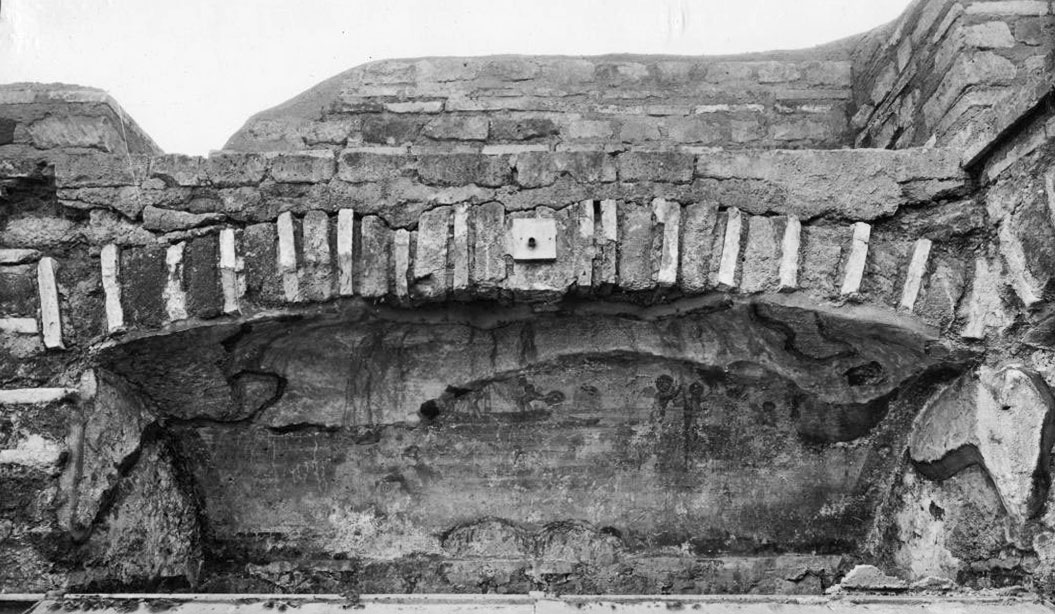
Especially its reuse makes this tomb so interesting. During a period of revival the new room to the left of the colonnade was cleared of all the formae to make room for a new grave (tomb 34a), accessible by a staircase with seven steps, from which only three survived.
The floor of this subterranean space was covered by marble slabs. Beneath the floor three sarcophagi were buried. Only the covers were visible. One was located on the west side, another on the south side and yet another below the staircase.
The first one was oval-shaped and carried two bodies. On the sarcophagus a hunting scene was depicted with deer and lions. On the short sides we see elephants catching two leopards.
The second one is rectangular with in the middle a portrait of a philosopher and a muse. The rest of the surface consists of wavy lines with Muses in the corners.
The third sarcophagus shows a medallion with the bust of a man on a surface with wavy lines.
The three sarcophagi are nowadays in the museum of Ostia.
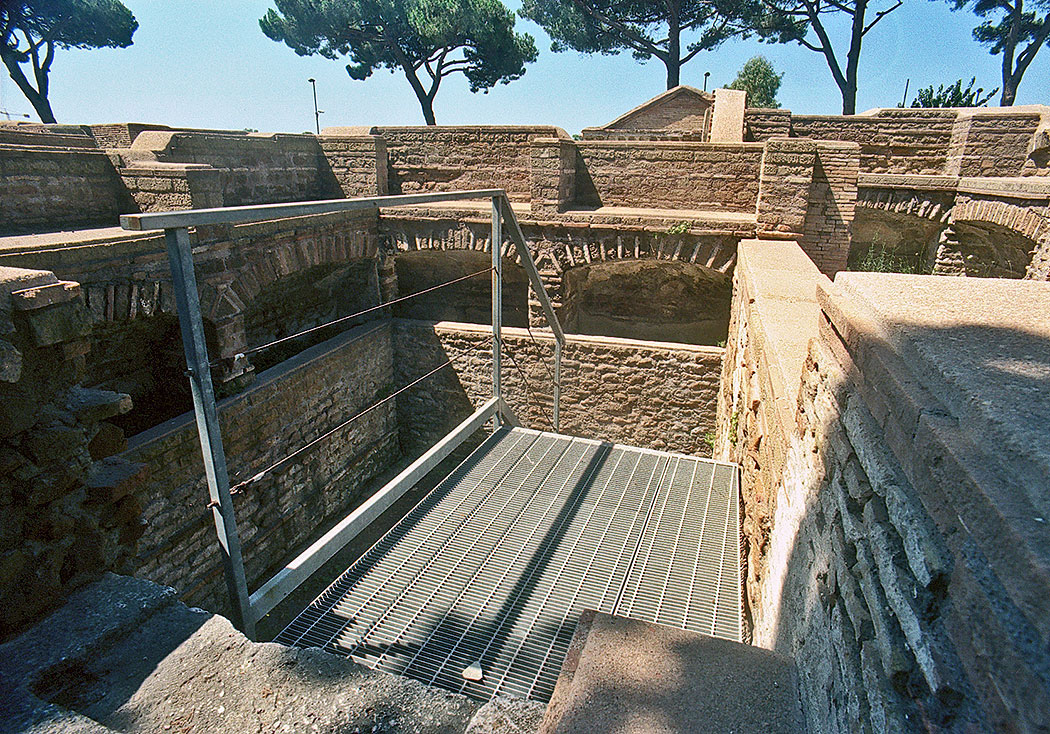
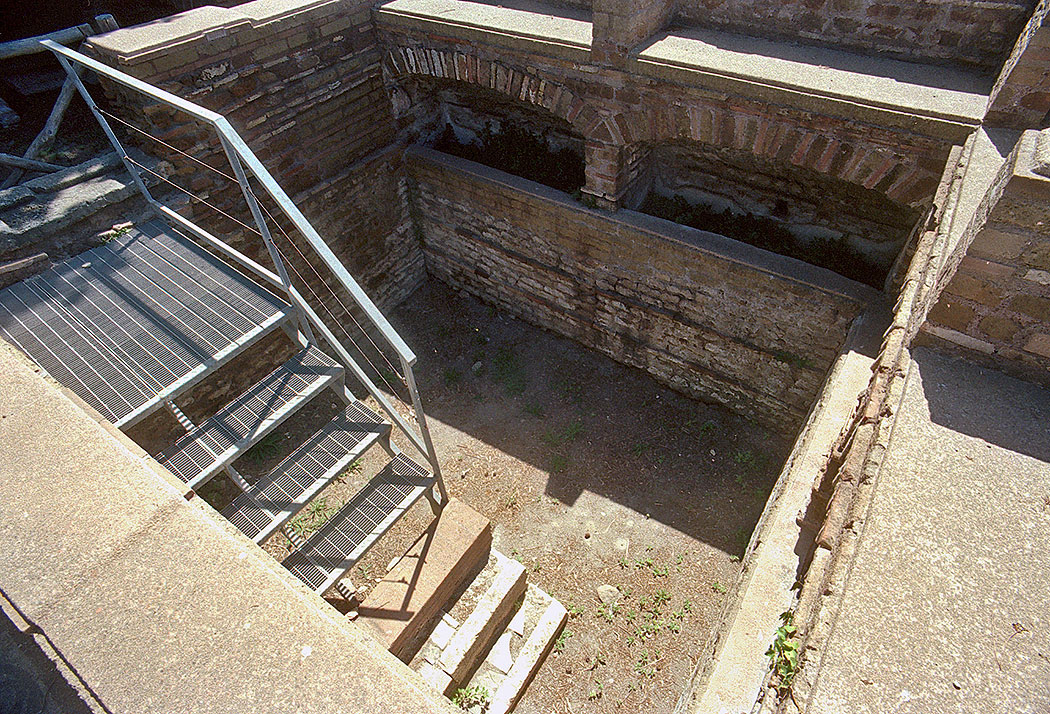
to the lower room. The floor of the upper room is missing but the arcosolia are still there.
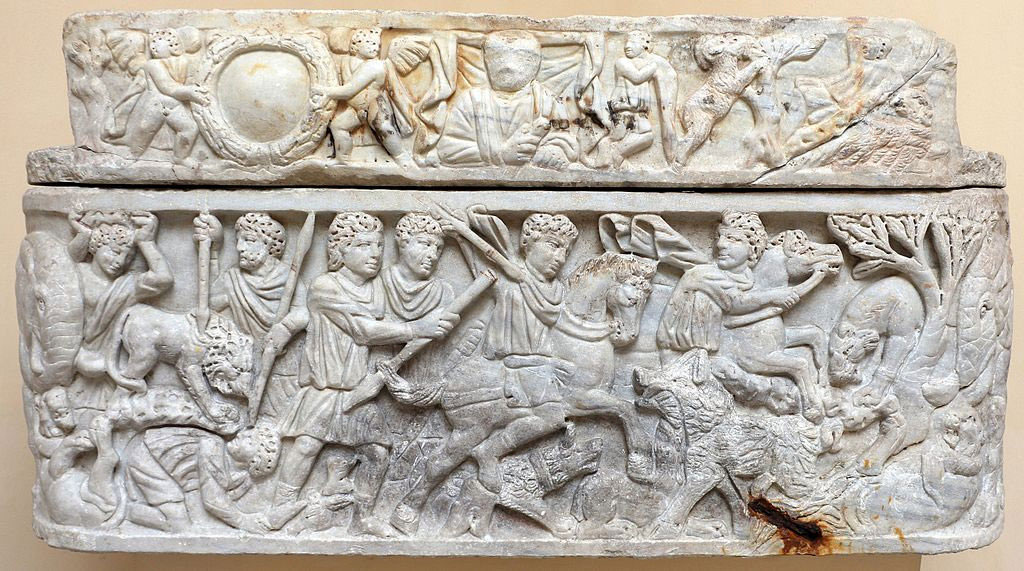
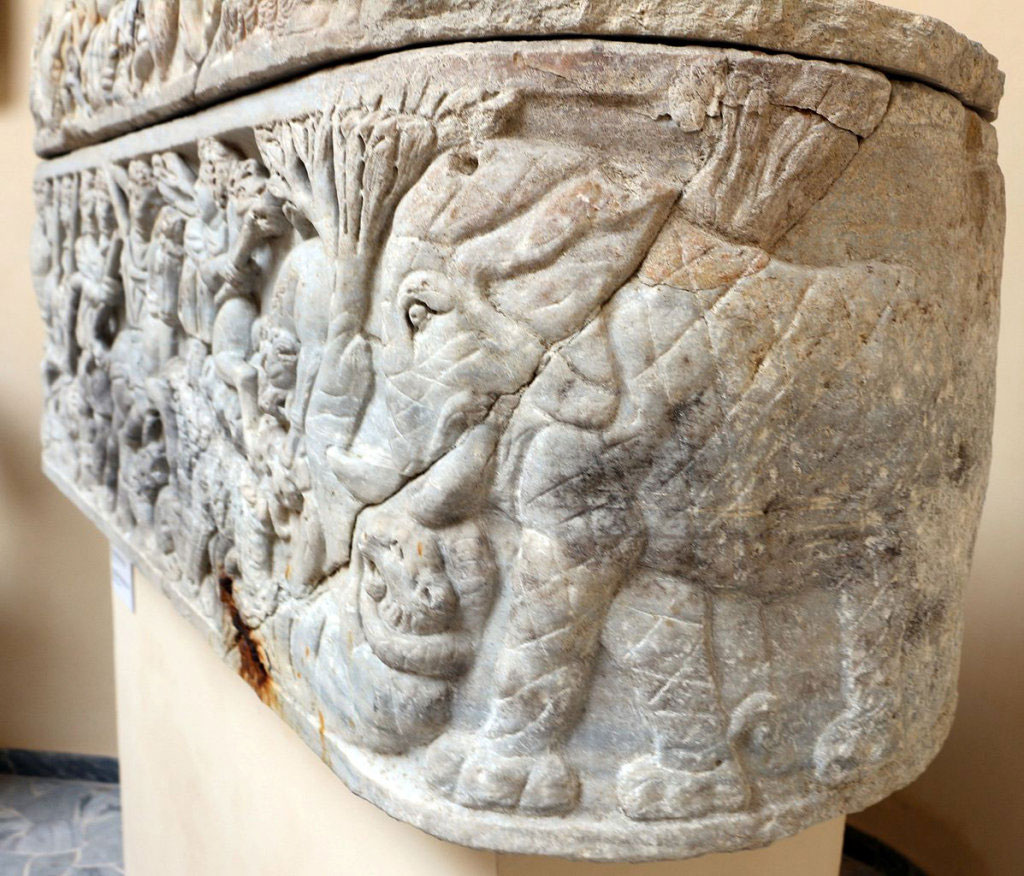
- Sources
- Russel Meigs - Roman Ostia, At the Clarendon Press 1973
- Guido Calza - Necropoli nell'Isola Sacra'(1940)
- Dr. Jan Theo Bakker.
- Hilding Thylander - Inscriptions du port d'Ostie (Lund C W K Gleerup 1952).
- Ida Baldassarre, Irene Bragantini, Chiara Morselli and Franc Taglietti - Necropoli di Porto, Isola Sacra (Roma 1996).
- Notes
- 1: Guido Calza interpreted the bearded head of the mosaic as a portrait of the owner of the tomb. According to Ida Baldassarre this is not likely. She explains the picture as an allegoric representation of a river or sea, like one can see in so many other examples – Guido Calza: “Necropoli nell’ Isola Sacra”; I, Baldassarre, I. Bragantini, Ch. Morselli and F. Taglietti: “Necropoli di Porto” 1996
Waardeert u ons werk?
Wordt lid van Roman Ports en ontvang het boek of doe een donatie!
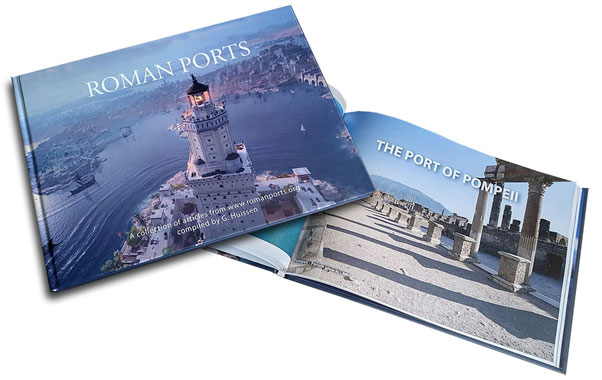 Wordt lid en steun ons
Wordt lid en steun ons
Isola Sacra Index (N)

Speciale sectie over de Romeinse begraafplaats van Portus (Engels)....
Lees meer...De teruggevonden vloot van Pisa

In 1998 werd bij toeval een ongelooflijk archeologisch erfgoed ontdekt in de buurt van het station Pisa San Rossore....
Lees meer...Leptiminus
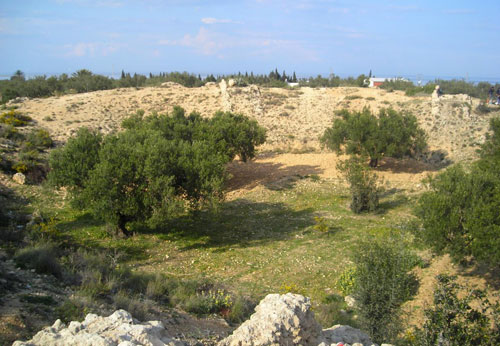
Op de plaats van het huidige Lamta aan de oostkust van Tunesië lag al in de oudheid een havenstad met de naam Leptis Minor ....
Lees meer...Romeins Zeehandelsrecht

Het Romeinse recht is het fraaiste monument dat Rome aan West-Europa heeft nagelaten....
Lees meer...Sullecthum (Salakta)

In de Sahel, in de Tunesische provincie Madhia vinden we aan zee het kleine stadje Salakta....
Lees meer...
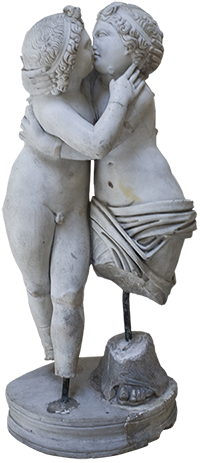 We are committed to providing versions of our articles and interviews in several languages, but our first language is English.
We are committed to providing versions of our articles and interviews in several languages, but our first language is English.